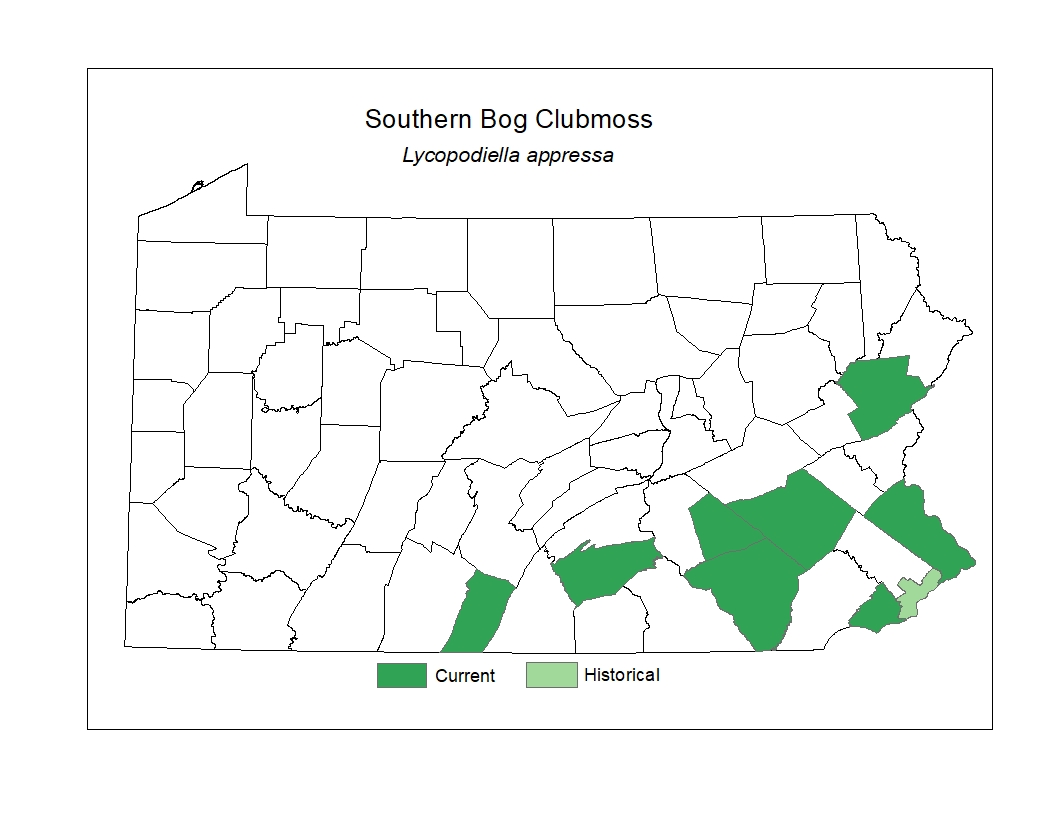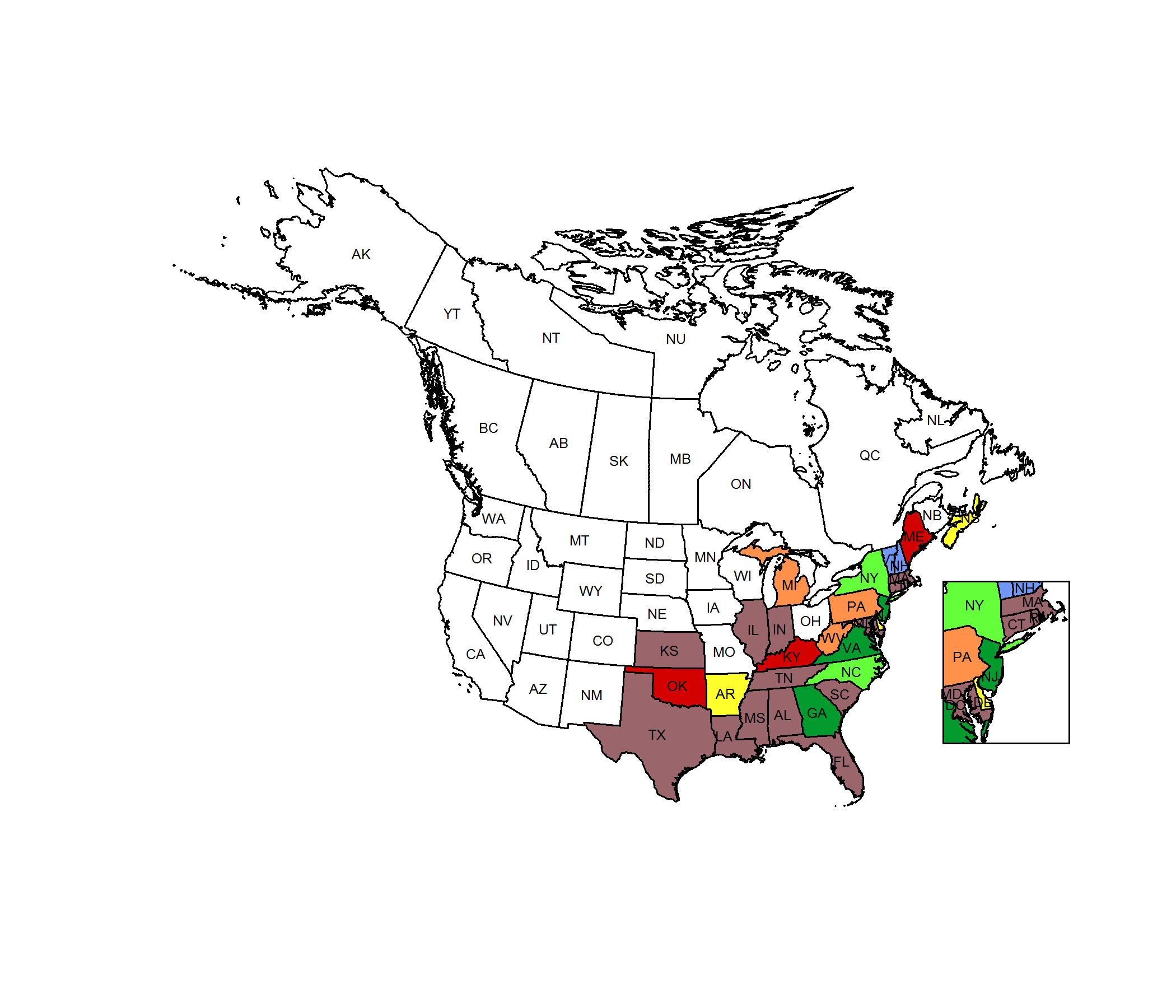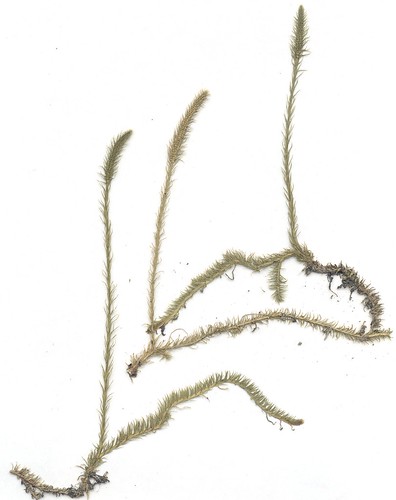 Species Factsheets
Species Factsheets
Lycopodiella appressa
Southern Bog Clubmoss
State Status: Pennsylvania Threatened (PT)
PBS Status: Pennsylvania Threatened (PT)
Federal Status:
Global Rank: G5
![]() rank interpretation
rank interpretation
State Rank: S2
Did You Know?
The name of this species comes from its reduced leaves that are appressed to the stem.
Description
Southern bog clubmoss (Lycopodiella appressa) is a perennial with leafy, creeping, horizontal stems that occasionally produce erect fertile stems. The fertile stems grow up to 40cm tall. The leaves are scale-like, with at least a few teeth on the margins, and are pressed flat against the stem in an upward direction and cover the entire length of the stem. The species does not have flowers, fruits or seeds, but produces spores in a club-like structure, called a strobilus, located at the top of each fertile stem. The strobilus in this species makes up less than 1/3 of the total height of the fertile stem.
Rank Justification
Imperiled in the nation or state because of rarity due to very restricted range, very few populations (often 20 or fewer), steep declines, or other factors making it very vulnerable to extirpation from the nation or state.
PABS
The PA Biological Survey (PABS) considers southern bog clubmoss to be a species of special concern, based on the few occurrences that have been recently confirmed and its wetland habitat. It has a PA legal rarity status and a PABS suggested rarity status of Threatened. About twelve populations are currently documented from the state.
Habitat
it grows in sandy to peaty seepages, depressions, and damp successional openings.
Survey Dates
Deciduous; Sporulates June - October; October - November
Distribution
In Pennsylvania, it occurs mainly in the southeastern counties,

Threats
Natural succession, invasive species, and the indiscriminate application of herbicide can be threats to existing populations.
Management
The viability of known populations of southern bog clubmoss and its habitat type can be enhanced by creating buffers around wetlands, controlling invasive species, and protecting the hydrology of the wetland and its surroundings. This species can colonize certain types of disturbed ground, such as abandoned quarries and utility rights-of-way, if the proper substrate and moisture conditions are present.
Conservation Status Map


NatureServe. 2017. NatureServe Explorer: An online encyclopedia of life [web application]. Version 7.1. NatureServe, Arlington, Virginia. Available https://explorer.natureserve.org.
http://gobotany.newenglandwild.org/species/lycopodiella/appressa/
- NatureServe. 2018. NatureServe Explorer: An online encyclopedia of life [web application]. Version 7.1. NatureServe, Arlington, Virginia. Available at https://www.natureserve.org/explorer
- Pennsylvania Natural Heritage Program. 2018.
- Rhoads, A.F. and W.M. Klein, Jr. 1993. The Vascular Flora of Pennsylvania. American Philosophical Society, Philadelphia, Pennsylvania. Rhoads, A.F. and T.A. Block.
- 2007. The Plants of Pennsylvania: An Illustrated Manual. 2nd edition. University of Pennsylvania Press, Philadelphia, Pennsylvania.







